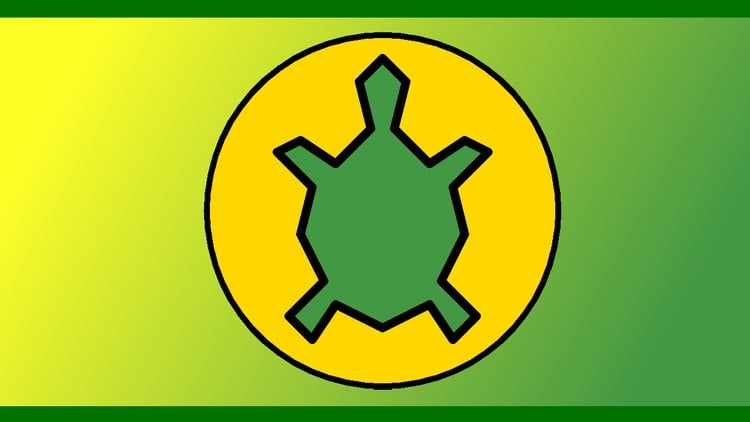
From Robots to Frameworks – Complete Course!
⏱️ Length: 9.8 total hours
⭐ 4.42/5 rating
👥 4,936 students
🔄 August 2025 update
Add-On Information:
Note➛ Make sure your 𝐔𝐝𝐞𝐦𝐲 cart has only this course you're going to enroll it now, Remove all other courses from the 𝐔𝐝𝐞𝐦𝐲 cart before Enrolling!
- Course Overview
- This comprehensive course, “Graphics for Pythoneers,” is your dedicated gateway into the foundational principles and practical applications of 2D computer graphics using Python. Designed for hands-on learning, it guides you from elementary plotting to sophisticated visual compositions.
- Spanning 9.8 hours, this August 2025 updated resource boasts a strong 4.42/5 rating from nearly 5,000 students, underscoring its effectiveness and relevance in teaching modern graphic programming techniques. It offers a structured path to mastering visual development with Python.
- Embrace the journey “From Robots to Frameworks” as you build a robust understanding of how visual elements are programmatically rendered and manipulated. This course equips you with the core knowledge to transform Python’s versatility into a powerful tool for visual expression across various domains.
- Requirements / Prerequisites
- A foundational understanding of Python programming is essential, including familiarity with core concepts like variables, data types, control flow (loops, conditionals), and basic function definitions. Comfort with writing and executing Python scripts will be beneficial.
- Access to a personal computer (Windows, macOS, or Linux) with Python 3.x installed is required. Learners should be prepared to use an integrated development environment (IDE) or text editor to write and manage their code.
- No prior experience in computer graphics, visual design, or advanced mathematics beyond basic algebra is necessary. The course is crafted to introduce all graphical concepts from scratch, making it accessible to beginners in the field.
- Skills Covered / Tools Used
- Mastering programmatic drawing techniques, enabling precise control over how visual elements are rendered on a digital canvas, constructing complex graphics purely through code rather than relying on design software.
- Developing the ability to implement dynamic and interactive graphic scenes, allowing user input or logical conditions to drive visual changes, animations, and transitions within your Python applications.
- Gaining proficiency in advanced spatial transformations such as rotations, translations, and scaling, essential for manipulating graphical objects accurately and composing intricate scene layouts.
- Utilizing Python’s inherent graphic capabilities to render diverse visual content, from fundamental geometric shapes to rich textual displays incorporating various fonts and international character sets.
- Cultivating a deep understanding of different coordinate systems and their practical application in graphic design, ensuring accurate placement and rendering of all visual components.
- Acquiring robust debugging skills specific to visual outputs, allowing you to effectively troubleshoot rendering anomalies, optimize graphic performance, and ensure the integrity of your visual designs.
- Benefits / Outcomes
- You will gain the expertise to conceptualize and build your own custom 2D graphics applications, offering creative freedom beyond templated solutions for various visual tasks.
- Cultivate a compelling portfolio of Python-based graphic projects, demonstrating your practical skills in visual data manipulation, custom asset creation, and a strong grasp of core graphical principles.
- Develop a profound appreciation for the inner workings of graphical user interfaces and digital visualization tools, understanding the “how” behind their visual effects and interactive functionalities.
- Unlock innovative methods for data visualization and storytelling, empowering you to convert raw information into custom-designed, impactful charts, diagrams, and illustrative graphics for clearer communication.
- Establish a solid educational foundation for progressing into more advanced graphic domains, including 3D rendering, game development using Python frameworks, or crafting sophisticated interactive dashboards.
- Enhance your algorithmic thinking and problem-solving skills by translating abstract visual concepts into concrete Python code, optimizing logic for efficiency and visual coherence.
- PROS
- Comprehensive Foundational Learning: Offers a deep dive into the absolute basics of 2D graphics programming, building a robust understanding before tackling complex topics.
- High-Quality & Proven Content: A stellar 4.42/5 rating from nearly 5,000 students attests to its effectiveness and well-structured curriculum.
- Current & Relevant: Benefits from an August 2025 update, ensuring the techniques and Python best practices taught are entirely up-to-date.
- Empowers Core Understanding: Focuses on the underlying principles of graphics, enabling adaptability across various frameworks and future technologies.
- Practical Skill Development: Equips students with tangible, marketable skills to create custom visualizations, interactive elements, and graphic assets.
- CONS
- As an introductory course, it may not immediately cover advanced 3D graphics or highly specialized external libraries, focusing instead on core 2D vector principles.
Learning Tracks: English,Development,Software Engineering
Found It Free? Share It Fast!